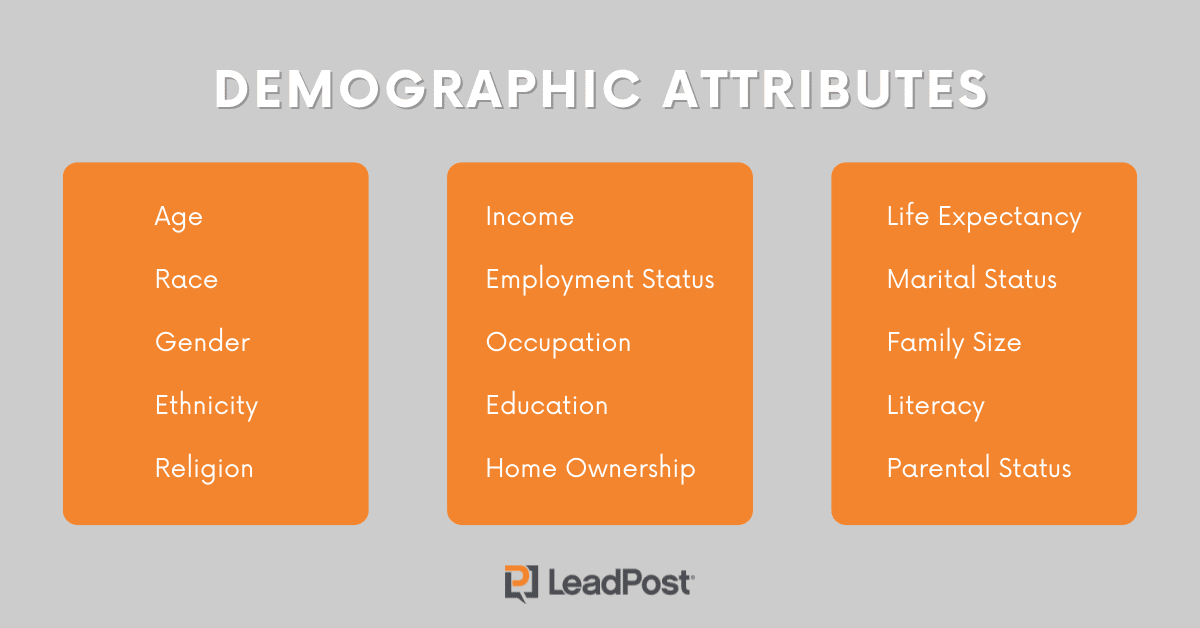Audience segmentation is a critical element of the marketing optimization process. Demographic segmentation, in particular, is an effective way to categorize members of your audience so you can deliver personalized campaigns that are relevant to their recipients.
What is Demographic Segmentation?
Demography refers to the social attributes of your audience. Customer demographic data includes characteristics like:
- Age
- Income
- Education
- Homeownership
- Parental status
Demographic segmentation is the process by which marketers group an audience into different subsets based on these characteristics.
This segmentation will enable you to deliver more relevant marketing campaigns by considering what offers, information, and products or services appeal to each segment. For example, a marketer for a clothing company that targets all ages might want to target parents with an email announcing a new product line for children.

How is Demographic Segmentation Involved in Marketing Optimization?
Marketing optimization relies on data. The more data you have, the better you can assess and improve your strategy and campaigns.
Demographic data allows you to test and see what approach is most effective for different groups of people. When you segment your audience based on this data, you can test messaging, offers, products, and other factors to determine how demographic characteristics influence the performance of your campaigns.
The Hard Part About Demographic Segmentation
The challenge to implementing demographic segmentation is gathering the data needed. Tools like Google Analytics offer some demographic data, but it’s anonymized and so you can’t, for example, use it to update your CRM records.
When generating leads through a website or collecting customer data at checkout, your primary concern is getting your visitors’ contact or billing information.
Since gathering customer demographic data is not your priority at that time, it makes sense to limit the fields included in your forms.
But how will you get it otherwise?
You need a simple, easily implemented solution to convert your traffic into leads without requiring visitors to fill out a form.
Capturing Demographic Data (and More) with Website Visitor Identification
You can capture the demographic data and contact information of up to 40 percent of your anonymous web traffic even if they don’t fill out a form.
By using website visitor identification, you can add new leads and supplement existing contact records with data like:
- name
- email address
- mailing address
- phone number
- automotive data
- household income range
- age range
- education level
- gender
- homeowner status
- length of residence range
- net worth range
- marital status
- presence of children
To implement visitor identification software, you add a short line of code to your website. Then, when a visitor to your website doesn’t convert, if the software matches them to an existing record held by one of its data partners, you’ll receive that lead in your CRM for as little as $0.24 a record.
How to Optimize Your Marketing Campaigns with Demographic Segmentation
Once you begin collecting this data, there are three ways to use it in your marketing optimization efforts.
Understand Your Customers
What do people in different groups value about your offering? What messaging resonates with each group? What motivates them to make a purchase?
Once you’ve got the data to differentiate between demographic segments, you can begin to understand what each segment is looking for so you can tailor your messaging and promotions accordingly.
For example, a middle-aged mother may think about your product or service differently than a college student. If so, your marketing campaigns should reflect that.
You can also use demographic data in your decision-making regarding questions about positioning and new product lines.
Create Personalized Experiences
Demographic data will give you insights into your customers that you can use to create tailored email marketing campaigns. Instead of sending out an email blast to your entire list, you can promote relevant products, services, and promotions to each demographic segment.
Test Everything
Continue to build on your understanding of your customers by testing messaging, marketing channels, promotions, and every other facet of your marketing strategy. See what works best for each demographic and look for ways to improve on that.
Make Demographic Segmentation Easy
Getting the data you need to segment your audience according to demographic attributes is now easy and cost-efficient. Try a free trial of LeadPost to get a better idea about what data is available and how you can use it to improve marketing optimization at your company.
